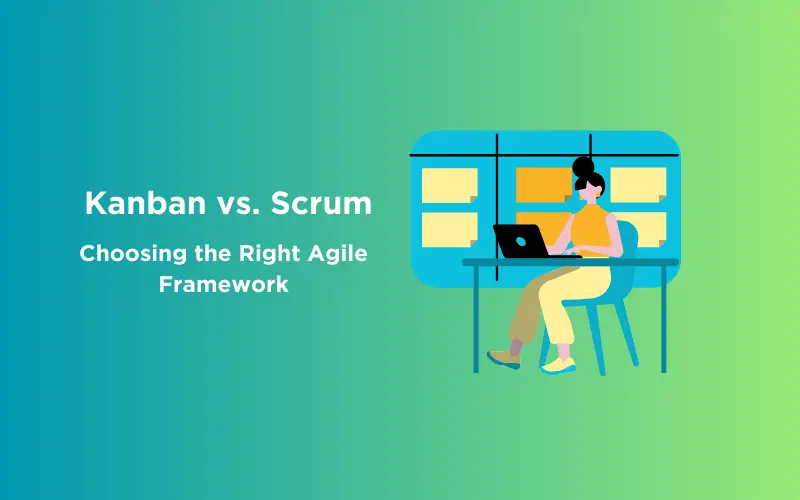![How to Make Amazing Projects for Internships and Placements? [2025] 1 Post thumbnail](https://www.guvi.in/blog/wp-content/uploads/2024/04/Feature-Image-2.png)
How to Make Amazing Projects for Internships and Placements? [2025]
Mar 26, 2025 5 Min Read 12583 Views
(Last Updated)
We all know that getting an internship or placement plays a vital role in any graduate’s life. Everyone wants to get a great internship and placement opportunity. But for that, you need to have an excellent portfolio, to make your portfolio stand out from the crowd. And to make it stand out, it must be having some great projects for internships and placements.
In this blog, we’ll be exploring some of the great ways to build projects for internships and placements. We’ll be also talking about some of the great projects you should start building and the top reasons why it is important for students. Also, read about some of the best practices to follow while building projects for internships and placements. Let’s begin:
Table of contents
- What are Internship Projects?
- Top Projects for Internships and Placements
- How to Make Amazing Projects for Internships and Placements?
- Top Reasons Why Internships & Placements is Important for Students
- Best Practices While Building Projects for Internships and Placements
- Wrapping Up
- FAQs
- How to make great projects for internships and placements?
- What are the six elements of a successful internship program?
- What makes an effective internship program?
- What are some of the best internship project ideas?
What are Internship Projects?
Before that, let me tell you the internship is a period of work experience provided by an employer to students, graduates, or even individuals seeking an opportunity to gain practical experience. It can be paid or unpaid and lasts for weeks, months, or even a year.
Internship projects are tasks or assignments given to interns to work on during their internship period. These projects are designed to provide interns with practical experience in their field of study or interest, allowing them to apply the knowledge and skills they have gained in a real-world setting.
![How to Make Amazing Projects for Internships and Placements? [2025] 2 Internship Projects](https://www.guvi.in/blog/wp-content/uploads/2024/05/Image-1-2.png)
Internship projects can vary widely depending on the organization, industry, and the intern’s area of focus. They may involve conducting research, developing software or applications, assisting with marketing campaigns, analyzing data, designing prototypes, or any other tasks relevant to the intern’s role and the company’s needs.
Try exploring LinkedIn where you can find some of the great internship and placement opportunities after you’ve worked on great projects, and built a strong portfolio and great connections.
Must Explore: 8 Exciting Project Ideas for Final Year B Tech Students [2025]
Top Projects for Internships and Placements
Now, let’s look at some of the top projects for internships and placements, which are going to help you grab an excellent career opportunity.
![How to Make Amazing Projects for Internships and Placements? [2025] 3 Top Projects for Internships and Placements](https://www.guvi.in/blog/wp-content/uploads/2024/05/Image-2-2.png)
- Software Development Projects:
- Building a web application from scratch using modern frameworks like React.js or Angular.js.
- Developing a mobile app for iOS or Android using Swift, Kotlin, or React Native.
- Contributing to open-source projects on platforms like GitHub.
- Creating a machine learning model for tasks like image recognition, natural language processing, or predictive analytics.
You must also look for software developer internships once you work on good-quality projects.
- Data Analysis and Visualization Projects:
- Analyzing large datasets using tools like Python (with libraries such as Pandas, NumPy, and Matplotlib) or R.
- Creating interactive data visualizations using libraries like D3.js or Plotly.
- Building predictive models using regression, classification, or clustering techniques.
- Once you gain the required skills and have worked on projects, apply for Machine Learning Internship Opportunities.
- Hardware and IoT Projects:
- Designing and prototyping a simple IoT device using Arduino or Raspberry Pi.
- Developing firmware for embedded systems.
- Building automated systems using sensors and actuators.
- Product Management Projects:
- Developing a product roadmap for a new feature or product.
- Conducting market research and user interviews to inform product decisions.
- Creating wireframes and mockups for user interface design.
- Marketing and Social Media Projects:
- Running a digital marketing campaign on platforms like Google Ads or Facebook Ads and analyzing the results.
- Managing social media accounts for a business or organization and growing their online presence.
- Creating content like blog posts, videos, or infographics to engage with the target audience.
- Consulting and Strategy Projects:
- Conducting a competitive analysis of a company’s industry.
- Developing a business case for a new market entry or product launch.
- Creating strategic recommendations based on market trends and customer insights.
- Finance and Accounting Projects:
- Performing financial analysis and modeling, including budgeting and forecasting.
- Conducting a valuation of a company or its assets.
- Developing strategies to optimize financial processes and improve efficiency.
- Human Resources Projects:
- Designing and implementing an employee training program.
- Developing diversity and inclusion initiatives within the organization.
- Creating recruitment strategies to attract top talent.
Also, some great UI/UX Internship opportunities will help you if you have the required skills and willingness to grab it.
How to Make Amazing Projects for Internships and Placements?
Now that you know the projects, let’s understand what are the steps you need to take to build great projects for internships and placements:
![How to Make Amazing Projects for Internships and Placements? [2025] 4 How to Make Amazing Projects for Internships and Placements?](https://www.guvi.in/blog/wp-content/uploads/2024/05/Image-3-2.png)
1. Set Clear Objectives: Before diving into your project, define clear objectives and deliverables. Understand what needs to be accomplished and prioritize tasks accordingly. This clarity will guide your efforts and prevent wasted time on unnecessary tasks.
2. Leverage Existing Resources: Utilize existing frameworks, templates, and tools to streamline your workflow. Whether it’s project management software, coding libraries, or design templates, leverage resources that can expedite the project without sacrificing quality.
Read About the Top 7 Important Engineering Project Ideas Using ChatGPT
3. Break it Down: Divide the project into smaller, manageable tasks or milestones. This approach makes the project less overwhelming and allows you to focus on one task at a time, increasing productivity and efficiency.
4. Time Blocking: Allocate specific time blocks for each task and stick to them religiously. Use techniques like the Pomodoro Technique to work in focused bursts with short breaks in between. This method helps maintain momentum and prevents burnout.
5. Prioritize High-Impact Tasks: Identify tasks that will have the most significant impact on the project’s success and prioritize them accordingly. Focus your efforts on tasks that align with project goals and deliver the most value to stakeholders.
Know About 10 Innovative Project Ideas for Students to Boost Creativity and Skills
6. Embrace Simplicity: Avoid overcomplicating the project with unnecessary features or details. Instead, focus on delivering a simple, elegant solution that addresses the core requirements effectively. Simplicity not only saves time but also enhances user experience and clarity.
7. Agile Methodology: Adopt agile methodologies like Scrum or Kanban to manage the project efficiently. Break the project into iterations or sprints, allowing for continuous feedback and iteration. This iterative approach fosters adaptability and ensures rapid progress.
8. Collaborate Effectively: Collaborate with team members or mentors to leverage their expertise and divide workload efficiently. Effective communication and collaboration can accelerate the project while fostering a supportive environment for shared success.
9. Automate Repetitive Tasks: Identify tasks that can be automated using scripts, macros, or tools. Automating repetitive tasks not only saves time but also minimizes the risk of errors, allowing you to focus on more critical aspects of the project.
10. Maintain Focus and Discipline: Stay focused on the task at hand and resist distractions that can derail your progress. Discipline yourself to stay on track and avoid procrastination, especially when working under tight deadlines.
Also Read: Project Ideas for College Students
Worried about where you can get exciting internship opportunities? Stop worrying. GUVI has got your back. You can check Excellent Internship Opportunities with GUVI in various disciplines for you to choose among them based on your preference.
Get to know how it works!
![How to Make Amazing Projects for Internships and Placements? [2025] 5 projects for internships and placements](https://www.guvi.in/blog/wp-content/uploads/2024/04/internship.png)
Top Reasons Why Internships & Placements is Important for Students
After the implementation part, you must understand or know some of the top reasons which states why internships and placements are important for students:
![How to Make Amazing Projects for Internships and Placements? [2025] 6 Top Reasons Why Internships & Placements is Important for Students](https://www.guvi.in/blog/wp-content/uploads/2024/05/Image-4-2.png)
- Real-world Experience: Internships provide hands-on experience in a professional setting, allowing students to apply classroom knowledge to practical situations.
- Networking Opportunities: Internships offer opportunities to network with industry professionals, mentors, and potential employers, which can lead to future job opportunities.
- Skill Development: Internships help students develop valuable skills such as communication, teamwork, problem-solving, and time management.
- Resume Enhancement: Internship experience enhances a student’s resume, making them more competitive in the job market.
- Exploration of Career Paths: Internships allow students to explore different career paths and industries, helping them make informed decisions about their future careers.
- Confidence Building: Successfully completing internships boosts students’ confidence in their abilities and prepares them for the transition to the professional world.
Find Out Top 30 Mini Project Ideas For College Students [UPDATED]
Are you a fresher and wondering how to prepare for interviews, we have an exciting Interview Preparation Toolkit for Freshers which is going to help you from step 1 to landing your dream internship or placement.
Best Practices While Building Projects for Internships and Placements
Before concluding, you must know some of the best practices to follow while working on projects for internships and placements:
![How to Make Amazing Projects for Internships and Placements? [2025] 7 Best Practices While Building Projects for Internships and Placements](https://www.guvi.in/blog/wp-content/uploads/2024/05/Image-5-2.png)
- Set Clear Goals: Clearly define the objectives and deliverables of your project to stay focused and organized.
- Time Management: Break down the project into smaller tasks and set deadlines for each task to ensure timely completion.
- Research Thoroughly: Conduct comprehensive research to gather relevant information and insights that will inform your project.
- Communicate Effectively: Maintain regular communication with your supervisor or team members to seek feedback and updates on the project’s progress.
- Be Proactive: Take initiative, ask questions, and seek opportunities to contribute beyond your assigned tasks.
- Quality Over Quantity: Focus on delivering high-quality work that demonstrates your skills and expertise rather than trying to complete numerous tasks hastily.
- Seek Feedback: Actively seek feedback from mentors, peers, and industry professionals to improve your work and enhance your learning experience.
- Reflect and Learn: Take time to reflect on your internship experience, and identify lessons learned, and areas for growth to continually improve yourself.
Also Read: Top Social Impact Project Ideas for Students
Suppose you are looking for a detailed Full Stack Development Career Program and get a high-paying internship opportunity. In that case, you can join GUVI’s Full Stack Development Course with Placement Assistance. You will be able to master the MERN stack (MongoDB, Express.js, React, Node.js) and build real-life projects.
Wrapping Up
Now that this blog has answered all the required doubts that you would be getting in your mind, you must start preparing to get an excellent internship and placement opportunity. You have read about projects for internships and placements, how to make amazing projects for internships and placements, top reasons why these are important for students.
By following these best practices, you can impress potential employers. Build some great projects to grab a high-paying and high-demanding job opportunity.
Also Explore: Is DSA Important for Placement in 2025?
FAQs
To make great projects for internships and placements, follow the below steps:
1. Research and plan a project
2. Have the skills required
3. Plan budget
4. Implement your idea
5. Take feedback and work on them
6. Ready to add it to your portfolio
The six elements to follow for a successful internship program is
work
feedback
social opportunities
networking
training
firm connection
An effective internship program is one where students are offered
mentorship
networking opportunities
professional development
constructive feedback
career guidance and connections
Some of the best internship project ideas are:
1. Social Media Analytics
2. CyberSecurity
3. Generating reports and conducting market research





















![9 Compelling Project Ideas for Frontend Development [With Source Code] 8 Feature image - Comprehensive List of Project Ideas for Frontend Development](https://www.guvi.in/blog/wp-content/uploads/2024/02/9-Compelling-Project-Ideas-for-Frontend-Development-With-Source-Code.webp)
![10 Unique Keras Project Ideas [With Source Code] 9 Keras Project Ideas](https://www.guvi.in/blog/wp-content/uploads/2024/10/Feature-Image.png)

![Top Full Stack Web Developer Coding Projects in 2025 [With Source Code] 11 full stack web developer coding projects](https://www.guvi.in/blog/wp-content/uploads/2021/10/Top-Full-Stack-Web-Developer-Coding-Projects-With-Source-Code.png)

![Top 10 React Native Project Ideas [With Source Code] 13 React Native Project Ideas](https://www.guvi.in/blog/wp-content/uploads/2024/10/React_Project_Ideas.png)




Did you enjoy this article?